Oman's economy has been transformed from a modest economic base depending on exports of raw materials such as dates, dried limes, fish and leather into a modern and integrated structure that has enabled it to achieve one of the world's highest growth rates. A key to this success has been careful use of oil revenues for infrastructural projects together with development of its non-oil sector. Manufacturing is concentrated at six industrial zones where over 120 factories are presently in operation, involving aluminum, fertiliser, furniture, household utensils, building materials, glassworks and canning. Meanwhile Oman's tourism industry has been developing at a steady pace with visitors showing deep appreciation for the clean, safe, culturally rich and environmentally fascinating attractions of the Sultanate, not to mention the friendly and welcoming attitude of its people.
Government
The Constitution, issued by
His Majesty Sultan Qaboos bin Said, establishes the system of government,
public duties and rights and steps of accession to power, in which Article
Five states that the system of government is a sultanate (royal) within
the male descendants of Sayed Turki bin Said bin Sultan, provided that the
selected person for the post is a wise adult Muslim, and the legitimate
son of Omani Muslim parents.
The organisational structure of government comprises the following: Head
of State and Supreme and Final Authority His Majesty Sultan Qaboos bin
Said, who is also Commander-in-Chief of the Armed Forces and the symbol of
national unity; a cabinet, in which His Majesty the Sultan is aided by a
Council of Ministers in the drawing up and execution of the general policy
of the State; a Defence Council, which is presided over by, and meets at
the invitations of His Majesty the Sultan, and includes eight members
selected according to their ranks within the Armed Forces; a Financial
Affairs and Energy Resources Council, also presided over by His Majest the
Sultan, deals with the preparation of the country's financial policy and
the annual budget. In addition, there are a number of higher committees,
sub-councils and public bodies, including the Higher Committee of
Conferences; the Civil Service Council; the High Committee of Vocational
Training & Labour; the Sultan Qaboos University Council; the Tenders
Council; the Omani Charity Authority; the General Organisation for Sport
and Cultural Youth Activities; and the Vocational Training Authority.
Meanwhile, the Oman Council comprises the State Council and the Majlis
Ash'Shura with the former body responsible for preparing studies on
executive development plans and programmes and helping to promote
investment in different production and service sections, as well as
resource development. The Majlis Ash'Sura, for its part, enjoys a broad
brief and the daily lives of citizens. It has the right to review economic
and social draft resolutions presented by concerned ministries prior to
their approval. It also has the right to prepare national development
plans and to review issues relating to services, facilities and
preservation of the environment.
The Country
Oman lies at the far
south-eastern part of the Arabian Peninsula between latitudes 16.40oN
and 26.2oN and longitudes 51.50oE and 59.40oE.
Its coasts extend about 1,700 kms from the Strait of Hormuz in the north
to the borders of Yemen, providing shorelines adjacent to the Arabian
Gulf, the Gulf of Oman and the Arabian Sea. Oman borders the UAE and the
Strait of Hormuz in the north, Saudi Arabia in the west, Yemen in the
south-west and the Arabian Sea in the east. It has a total area of 309,500
sq.km. ranking second in terms of land area among the GCC countries.
The Hajar Mountain range extends in the form of a bow from the Ras al-Jibal
area in Musandam to Ras al-Hadd, which forms the south-eastern headland of
the Arabian Peninsula. The mountains in Musandam reach 1,800 metres above
sea level. The coastal land area bordering the Gulf of Oman, known as Al
Batinah, consists of a low sand and gravel plain formed by sediments
deposited by outwash from mountain valleys on its landward side. Its width
varies from 5 to 80 km and it is more than 300 km in length. The area
lying to the west is called Al Dhahirah, consisting of plains formed by
wadi deposits which are criss-crossed by many wadis. Towards the eastern
area.
History
During the course of its
history, Oman has been known as Magan, Mazoon and Oman. According to
evidence found in cuneiform writing, the name Magan was connected with the
ancient shipping and copper smelting industries. The Mazoon name was
connected with the country's prolific freshwater resources, whilst the
name Oman stems from the migration of Arabic tribes from a place called
Oman in Yemen. Some sources believe that the name itself originates from
Oman bin Sabaa bin Ibrahim, son of the Prophet Abraham.
Oman was one of the first countries to embrace Islam voluntarily during
the era of the prophet Mohammed, praise be upon Him, who sent Amr bin
Al-As to the current kings of Oman, Gaifar and Abd, sons of the recently
deceased Al Jalandi bin Al Mustakbir, calling on them to embrace Islam.
Oman, under the leadership of the two Al Jalandi brothers, responded
positively to the call, and since then has become a confirmed part of the
Islamic world, helping to spread the faith overseas, especially in east
and central Africa.
In 1507 AD the Portuguese invaded a series of Omani coastal towns,
including Qalhat, Quriyat, Muscat and Sohar. As a result of strong
resistance from the Omanis the invading forces were unable to extend their
influence to inland areas.
The accession to power of Imam Nasir bin Murshid in 1624 AD, marking the
beginning of the Al Ya'aruba dynasty, was a major turning point in the
country's fortunes,since Imam Nasir was able, for the first time, to unite
the country under his strong leadership. His successor, Sultan bin Saif
al-Ya'aruba, continued the Jihad against the Portuguese, launching several
attacks on them in the Indian Ocean, but the Portuguese did not make a
complete withdrawal from the area until they were expelled from the
country in 1649 during the reign of his successor, Imam Saif bin Sultan,
who was known as "Qaid Alardh" and who laid the foundations of
the famous Omani navy, which on to establish naval control over the whole
east African coastal region.
The accession of Imam Ahmad bin Said Al Busaidi in 1744 AD was the
beginning of a new era in Omani history, which has continued for the last
254 years. Imam Ahmed bin Said succeeded in uniting the country, ending
internal disputes and establishing a strong naval force together with a
large commercial fleet, thus reviving commercial activity along the Omani
coastline. During the era of his grandson Hamad (178401792) the capital
wass removed from Rustaq to Muscat.
The Al Bu Said dynasty has continued to rule Oman since the middle of the
18th century, consolidating national unity, which reached its peak during
the era of Sultan Sayyid bin Sultan Busaidi (1804-1856) and the current
Sultan, His Majesty Qaboos bin Said, the founder of Oman's modern
renaissance.
Heritage and Culture
The Government pays special
attention to the preservation of Oman's heritage, with the strong support
of His Majesty, who has stated that the construction of a modern state
utilising the latest scientific and technological methods, has not
distracted Oman from its ancient heritage and achievements. On the
contrary, it has worked hard to combine modernity with traditional values.
1994 was declared the Year of Omani Heritage. The country's constitution,
issued in 1996, reaffirms a solid commitment to preserve the national
heritage.
The Ministry of National Heritage and Culture, formed in 1976, is
undertaking a number of programmes directed at reviving the cultural,
scientific and architectural heritage and also training Omani specialists
in a number of related fields. Among the work involved in this effort has
been collection, classification, copying and printing of documents related
to Omani history, both locally and abroad. Approximately 4,394 documents
relevant to Oman's history were collected from Portugal, Holland, India,
Britain, USA, Tanzania and elsewhere. State-of-the-art scientific methods
are used to preserve these documents with the help of UNESCO and Sultan
Qaboos University. A special section has been established at the Ministry
of National Heritage and Culture to handle and preserve the documents.
The large number of forts, castles, mosques and ancient buildings situated
throughout the Sultanate clearly reflects the Omanis impressive skills in
the field of architecture and building, both from aesthetic and practical
viewpoints. Out of more than 500 castles, forts and ancient buildings, a
number, such as Bahla Fort, have been included in the UNESCO list of World
Heritage Sites, due to aspects of Omani life are displayed in a number of
popular and much-visited museums, including the Oman National Museum, the
Natural History Museum.
An Important aspect of cultural revival and preservation has been in the
area of handicrafts, which has been encouraged and nurtured, despite the
inevitable shift away from these ways in the face of modern production
methods and equipment.
While providing all possible assistance and support to boost the cultural,
intellectual and innovative skills and talents of the Omani people, the
Government also works hard to build bridges of cultural cooperation and
interaction with other friendly nations.
Environment and Wildlife
The Sultanate of Oman is considered one of the leading countries in the region in the field of environment preservation, with the Ministry of Regional Municipalities and Environment especially established for this purpose. His Majesty the Sultan has also sponsored a major biennial conservation award, which is considered the first
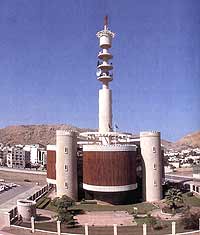
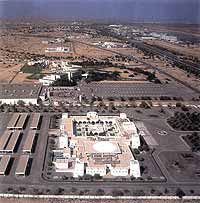


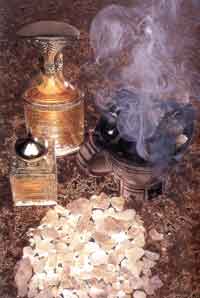
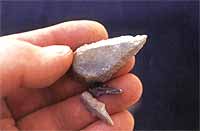
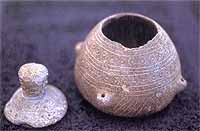
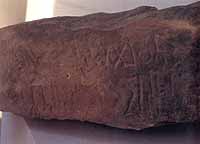
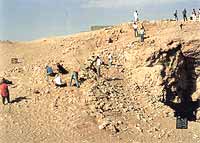
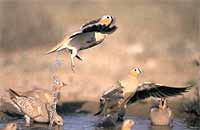
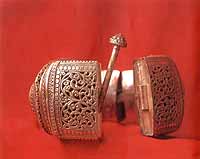
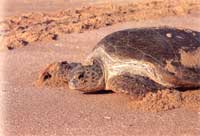
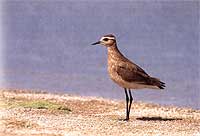
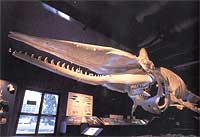
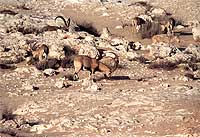
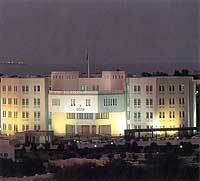
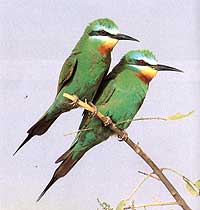
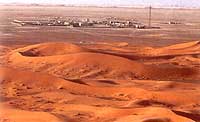

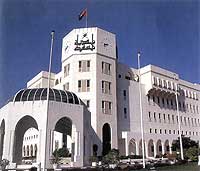
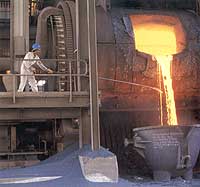
As a mark of gratitude for his efforts in preserving the environment locally, regionally and internationally, His Majesty the Sultan was awarded the prestigious John C. Philips Award by the Worldwide Fund for Nature (WWF). Meanwhile, the National Environment Strategic Plan for the preservation of Oman's environment has become an integral part of a comprehensive development strategy aimed at increasing environmental awareness. Omani Environment Day is celegrated on 8th January each year. Over the last 13 years, a month-long competition has been organised between the different municipalities in the field of environment preservation. A similar activity is also organised by a number of industrial companies to promote awareness of industrial environmental issues.
A comprehensive environment programme was established by His Majesty the Sultan in 1984, in cooperation with the WWF, with the primary objectives of protection and breeding of endangered species of animals and plants. Six nature reserves were established under the programme: an Arabian Oryx Reserve with over 300 oryx in Jiddat al Harasis; a Marine Turtle Reserve at Ras al-Hadd; the Daymaniyat Islands Nature Reserve; the Wadi Sarin Nature Reserve for preservation of the Arabian tahr; protected areas in the Khors of Dhofar and a special Mangrove Nature Reserve. These reserves have become interesting tourist attractions and are particularly important to the long term preservation of key natural environments and species in the Sultanate.
Economic Development
The transformation of
Oman's economy from a modest, rudimentary economic base depending on
exports of raw materials such as dates, dried limes, fish and leather into
a significantly more developed structure capable of achieving one of the
highest world growth rates (9.5% in 1996) is the result of considerable
effort and dedication at all levels of society. Over the course of the
first four Development Plans, each lasting five years, i.e. from 1976 to
1995, the economy made fundamental changes that brought it from a state of
isolation and poverty into one of the most successful economies in the
region, creating a positive climate for both regional and international
banks and other financial establishments to base themselves in the
country.
A key to this programme has been the development of the non-oil sector.
Currently, there are six industrial zones in the Sultanate: Rusayl in
Muscat; Raysut in Salalah; Sohar; Sur; Nizwa and Buraimi. They include 118
factories, in addition to many others that are presently under
construction or at the planning stage. These industrial projects vary from
aluminum smelting in Sohar, with a planned production capacity of 480,000
tonens per year, to the ammonia fertiliser plant in Sur and other medium
and light manufacturing industries such as furniture, household utensils,
building material, glassworks and canning.
The Sultanate's development strategy is focused on promoting the non-oil
sector with a view to augmenting oil revenues and eventually replacing
them. It also endeavours to increase the rate of investment directed
towards high income projects, particularly in the fields of industry,
mining, agriculture and fisheries and the development of human resources,
so that these can make positive contributions to the Omani economy and the
refinement of its infrastructure. In addition, it supports trading
activities and promotes the consolidation of the private sector with the
national economy.
Against this background, a new 1996-2020 25-year Development Strategy was
formulated, with the aim of further strengthening the Omani economy by
reducing its dependence on government spending, oil revenues and
expatriate labour. One of the main elements of this envisions the
establishment of an efficient private sector, able to face competition and
make an effective contribution to the development process. It also places
a priority on the development of human resources and the establishment of
a dynamic, diversified economy that can interact efficiently with the
world economy.
The Fifth Five year Development Plan (1996-2000) is directed at boosting
economic performance and increasing the non-oil sector's share in the GDP
to 68.8% by the end of the year 2000. To lure foreign investors and
achieve greater harmony with the world economy investment incentive laws
were introduced to help keep the Sultanate's trading environment in line
with World Trade Organisation norms. The moves also promote closer
relations with friendly countries and reassure investors of the sound
economic trends and appropriate investment climate in Oman.
Social Development
The Sultanate of Oman has
paid particular attention to all aspects of social development aimed at
improving the lives of its citizens. Since 1969 education in Oman has
witnessed dramatic growth in all its aspects. The number of schools
increased by a factor of 320, from just three schools in 1969 to 958 in
1998. Meanwhile, the number of students grew by a even greater factor of
565, from 909 in 1969-1970 to 514,315 in 1997-1998. Currently,
preparations are underway to divide the ten-year basic education period
into two stages of four and six years, to be followed by a two-year
secondary stage. The number of teachers in 1997-1998 reached 232,245. of
whom the majority are Omani. The illiteracy eradication centers rose to
148, with 254 sections and 4014 students, while the adult education
centres rose to 180, with 6782 students. By the 1997-1998 academic year
there were 7880 free studies students.
Sultan Qaboos University, representing the top of the educational pyramid,
was opened in 1986, with only five colleges: Medicine, Engineering,
Education & Islamic Studies, Science and Agriculture. The Arts College
was opened in 1987, followed by the College of Commerce & Economics in
1993. In addition, there are a number of government and private institutes
and colleges and permission has been granted for the establishment of
private universities.
State of the art health services are now situated throughout the country.
There are 47 hospitals in the Sultanate, with 4401 beds, as well as six
specialist health complexes and 108 health centres, of which 57 are
equipped with maternity services in remote areas. There are also seven
quarantines at airports and seaports. In 1997 aa 390 bed hospital was
opened in Sohar, and work is underway to build other hospitals, such
as the Nizwa Hospital with 280 beds, and Sur Hospital. In 1997, 99% of
infants were immunised against tuberculosis, diphtheria, whooping cough,
tetanus, polio and measles.
Special attention has been paid to Omani youth with a view to encouraging
them to play a constructive role in society. To this end, the General
Organisation for Sport and Cultural Youth Activities to formulate
appropriate programmes for the Omani youth. A new youth centre is
currently under construction in Al Dhahirah. More than 12 sports
federations, an Olympic Committee and more than 50 sports clubs are
actively operation throughout the country. In addition, a large number of
cultural and scientific clubs and centres have been established, including
a special section for women's activities at the General Organisation for
Sport and Cultural and Cultural Youth Activities.
Oman at a Glance
Official name: Sultanate of Oman.
Head of State: His Majesty Sultan Qaboos bin Said.
Location: The Sultanate of Oman lies in the far south eastern part of the Arabian Peninsula. It extends between latitudes 16.40oN and 26.20oN, and longitudes 51.50oE - and 59.40oE.
Area: 309,500 square kilometers.
Climate: The climate of Oman varies considerably in its different regions. In the northern coastal areas the summer weather is hot and humid in summer, while in the inland areas it is hot and dry, with the exception of some high areas, such as Jebal al-Akhdar, where the climate is temperate around the year. In the south the climate is more temperate. Rainfall in the northern region is generally low, but may be heavy when it does fall, causing flash floods in wadis. In the southern area the monsoon rains in Dhofar province begin in July and continue throughout August and September, during which time the temperate climate and green landscape become popular tourist attractions.
Population: 2,018,074 (1993 census), of which 1,483,226 are Omani (73%) and 534,848 are expatriate.
Capital: Muscat.
Time: 4 hours ahead of GMT.
Currency: Omani Rial.
Airports: Al Seeb International Airport and Salalah International Airport.
Sea Ports: Sultan Qaboos Port and Raisoot Port in Salalah.
Museums: The National Museum, the Omani Musuem in Qurum, the Military Museum in Bait al Falaj, the Omani-French Museum, Sohar Fort Museum, the National History Museum and the Children's Museum.
Flag: The Omani flag was hoisted for the first time on December 17, 1970. The red, green and white flag carries the Sultanate's emblem of two crossed swords with a khanjar and belt superimposed.
EGYPT - SYRIA - JORDAN